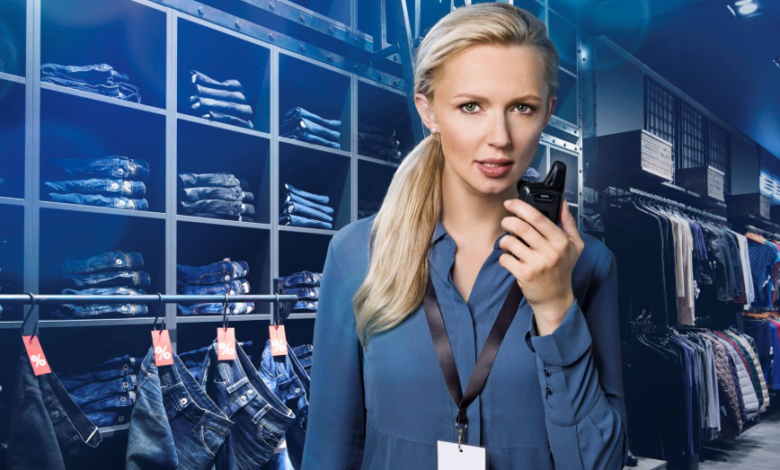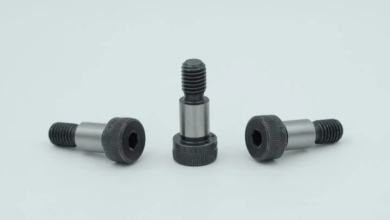How to Choose the Right Two-Way Radio for Your Team

In today’s fast-paced world, clear and reliable communication is essential for keeping teams connected — whether you manage construction workers on a remote site, coordinate security staff at a large event, or oversee logistics in busy transportation routes. Two-way radios remain one of the most dependable tools for instant communication without the need for mobile networks or unstable internet connections. Professionals in Mexico looking for high-performance devices can explore options such as this reliable UHF portable radio, which combines durability, clarity, and ease of use for various industries.
Choosing the right radio, however, requires understanding the different models, features, and specifications available in the market. This guide will walk you through the essential factors to consider before purchasing two-way radios for your team.
1. Understand Your Communication Needs
The first step is identifying where and how your team will use the radios.
Ask yourself these key questions:
Are your operations mainly indoors (like a hotel or shopping mall) or outdoors (construction, farms, mining)?
Do you need long-distance communication, or will your team work within a small area?
Is the environment noisy, humid, or exposed to dust or water?
How many users need to communicate simultaneously?
For instance, an industrial facility might require durable, intrinsically safe radios with noise-cancelling microphones, while a hospitality business may prioritize lightweight models with clear voice quality and long battery life.
2. Choose Between UHF and VHF Frequencies
One of the most important technical decisions is choosing the right frequency band: UHF (Ultra High Frequency) or VHF (Very High Frequency).
UHF radios (400–512 MHz) are ideal for environments with obstacles — buildings, walls, or dense vegetation — because they transmit shorter wavelengths that penetrate barriers effectively.
VHF radios (136–174 MHz) perform better in open areas like rural zones, agricultural fields, or at sea, where there are fewer obstructions.
If your team often works both indoors and outdoors, UHF radios are generally more versatile.
3. Consider Portability and Design
Comfort matters, especially for teams who carry radios during long shifts. Modern radios are designed to be lightweight yet resistant, often complying with military standards (MIL-STD-810) for shock and vibration resistance.
Look for models with:
Ergonomic grips for easy handling.
Compact size for pocket or belt use.
Sturdy clips for mobility.
Backlit displays for night operations.
If your team is constantly on the move — for instance, in delivery services or event coordination — a slim radio model can make a big difference in convenience and endurance.
See also: UL TPU Cable: A High-Performance Wiring Solution for Modern Technology
4. Evaluate Battery Life and Charging Options
A professional two-way radio should offer a full workday of battery life or more. Many modern radios include lithium-ion batteries that provide 10 to 15 hours of operation.
Additional tips:
Keep spare batteries charged for emergency shifts.
Use multi-unit chargers to charge several radios simultaneously.
Check for battery-saving features like automatic standby or VOX mode (hands-free voice activation).
For teams that work long hours or in remote areas, reliable battery performance ensures uninterrupted communication and safety.
5. Prioritize Durability and Safety Ratings
Depending on your work environment, your radios may face dust, rain, or extreme temperatures. Look for IP (Ingress Protection) ratings — for example, IP54 means protection against dust and water splashes, while IP67 provides resistance to submersion.
For industries like oil, gas, and mining, intrinsically safe radios are a must. These devices are designed to prevent sparks or overheating in explosive environments. Always verify certifications before buying.
Radios built to withstand harsh conditions help reduce replacement costs and ensure your team’s safety.
6. Check the Channel Capacity and Privacy Features
Channel capacity determines how many separate communication groups your system can support.
Small teams (under 10 users): 16 channels may be enough.
Larger operations (security, logistics): opt for 128 or more channels.
You can assign each department or shift its own frequency to avoid interference. Some radios also offer privacy codes, which help minimize cross-talk from other nearby users.
7. Explore Advanced Features and Accessories
Today’s radios go beyond basic push-to-talk functions. Modern models include:
VOX (Voice-Activated Transmission) – enables hands-free use.
DTMF signaling – supports secure identification and private calls.
Scan functions – allow users to monitor multiple channels.
Emergency alerts – send distress signals instantly.
Accessories can further enhance usability:
Earpieces and microphones for discrete communication.
Extended antennas for greater range.
Carrying cases and belt clips for comfort.
You can find a full selection of accessories — from antennas to chargers — through professional distributors in Mexico who specialize in communication solutions.
8. Think About Future Scalability
Investing in a radio system should consider not just current needs but also future growth. Choose brands and models compatible with additional units, repeaters, and digital systems.
For example, if your team might expand operations or need communication across longer distances, selecting radios that integrate easily with repeaters or digital trunking systems will save time and money later on.
9. Compare Brands and Reliability
Top brands like Kenwood, ICOM, and Motorola are known for producing durable, clear-sounding, and efficient radios that meet international standards.
When comparing options:
Review warranty terms and after-sales support.
Verify the availability of spare parts and local service in Mexico.
Check user reviews or request a demo before committing to a bulk purchase.
Choosing from established brands gives you confidence in long-term reliability and consistent performance.
10. Look for Local Expertise and Support
Finally, purchasing radios from an authorized local supplier ensures you receive authentic products, technical advice, and warranty coverage.
Trusted retailers such as RadioRed, a leading online store in Mexico, provide not only a wide selection of communication radios and accessories but also expert recommendations tailored to your specific needs. Their catalog includes advanced options like the TK-3000 UHF portable radio, known for its lightweight design, rugged build, and compatibility with multiple accessories — an ideal choice for professionals who demand both performance and durability.
Final Thoughts
Selecting the right two-way radio isn’t just about price — it’s about ensuring reliable communication that keeps your team connected, efficient, and safe. By evaluating factors such as frequency, durability, battery life, and expandability, you can choose a model that perfectly matches your operational needs.
For professionals across Mexico seeking top-quality radios and accessories, exploring trusted suppliers like RadioRed ensures access to reliable equipment that performs consistently, even in the most demanding environments. With the right tools and expert guidance, your team will always stay connected — anytime, anywhere.




